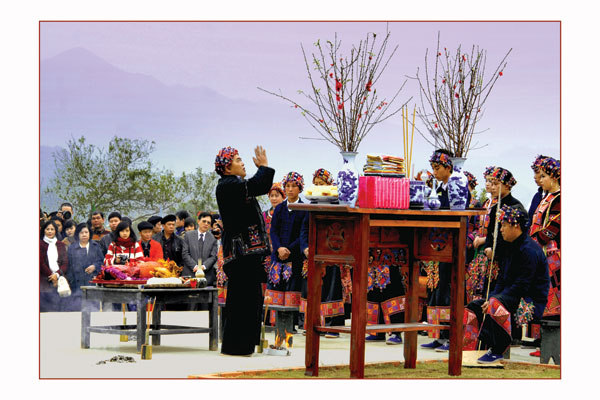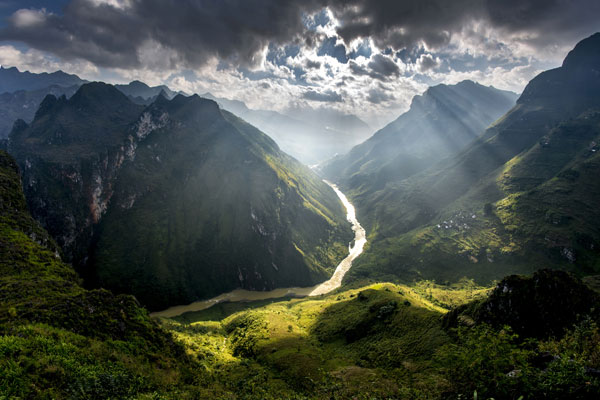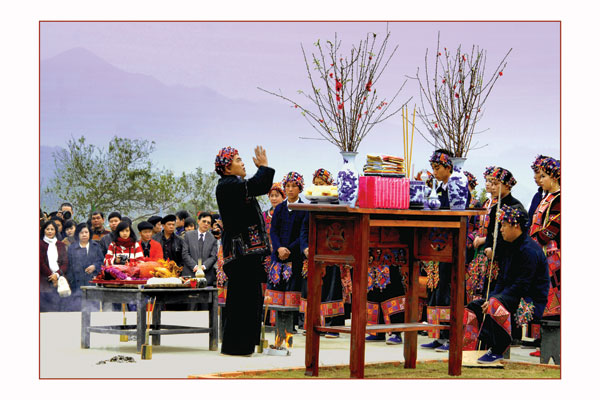(No.2, Vol.7,Apr-May 2017 Vietnam Heritage Magazine)

At the Praying For Rain Festival of the Lolo people, Ha Giang Province.


Ha Giang Province.
Photo: Tran Binh An
Lolo villagers offer up their best
to seek the favour of the gods
Praying for rain is a tradition of many of the 54 ethnicities in Vietnam, although it is quite different from one minority to another. One of the most ancient, most unique and best-known by the wider world is that of Lolo communities in Meo Vac District of Ha Giang Province.
The Lolo ethnic group has a population of about 5,000 people scattered in many provinces, mainly in Ha Giang Province (about 1,500 people) and Cao Bang Province (nearly 2,500 people). They have a rich folklore which includes songs, dances and sagas. They worship their ancestors and believe that everything in the world has a soul.
Taking part in a Lolo rain prayer can be combined with exploring the remote Meo Vac District (bordering China). You can visit Sang Pa A, a typical Lo Lo village, and famous places such as Nho Que River, Tu Sang Chasm, and Ma Pi Leng Pass. If possible, you should also stay a little longer in Meo Vac to see the Khau Vai Love bazaar, where young men and girls gather to seek a life companion, on the 27th of the 3rd lunar month, an event that takes place only once a year.
The most striking feature of Lolo people is their ornamental brocades. Their festive dresses, especially those of the women, are perhaps the most colourful and intricately made in Vietnam.
Lolo rain prayer festival usually takes place on the 15th, 17th or 19th of the 3rd lunar month at Sang Pa A Village of Meo Vac township. The purpose is, of course, to pray to the gods, heaven and earth, to beg for good weather, good crops and health. This is also an occasion for villagers to gather and talk common business and for young people to exchange signals of affection.
In the past, rich families bore the expenses of festivities for the whole village. Today, almost everybody contributes what they can, including chickens, dogs, rice and wines to the village head or shaman.
On the day of the ritual, all the contributions are brought to a large clearance in the village centre or near the paddies. Live sacrificial animals are tied to the ritual altar. The ritual host, usually a highly reputed elder or shaman, begins the day by asking permission from the forefathers.
As the host finishes the introduction, young men take the dogs and chicken out to make them into food. Then the prepared food is arranged on the altar table with wines, a sword and four bamboo incense pipes representing four directions of the universe. Having double-checked that the offerings are ready, the host begins long melodic prayers in the Lolo language, accompanied by two-string violins and a bronze drum, a Lolo sacred treasure. Villagers in their colourful festive dresses stand respectfully and solemnly around the host while he is communicating with the spiritual world.
The prayers end by the host burning votive paper at the corners of the altar, sprinkling wine to the four directions and thanking heaven and earth. Villagers begin a lavish feast with chicken, dog meat and homebrewed drinks.
As the drinks elevate their mood to a high level, beautifully dressed young men and girls tighten their circle to play two-string violins, dance and sing ancient tunes praising the land and the love between men and women.

